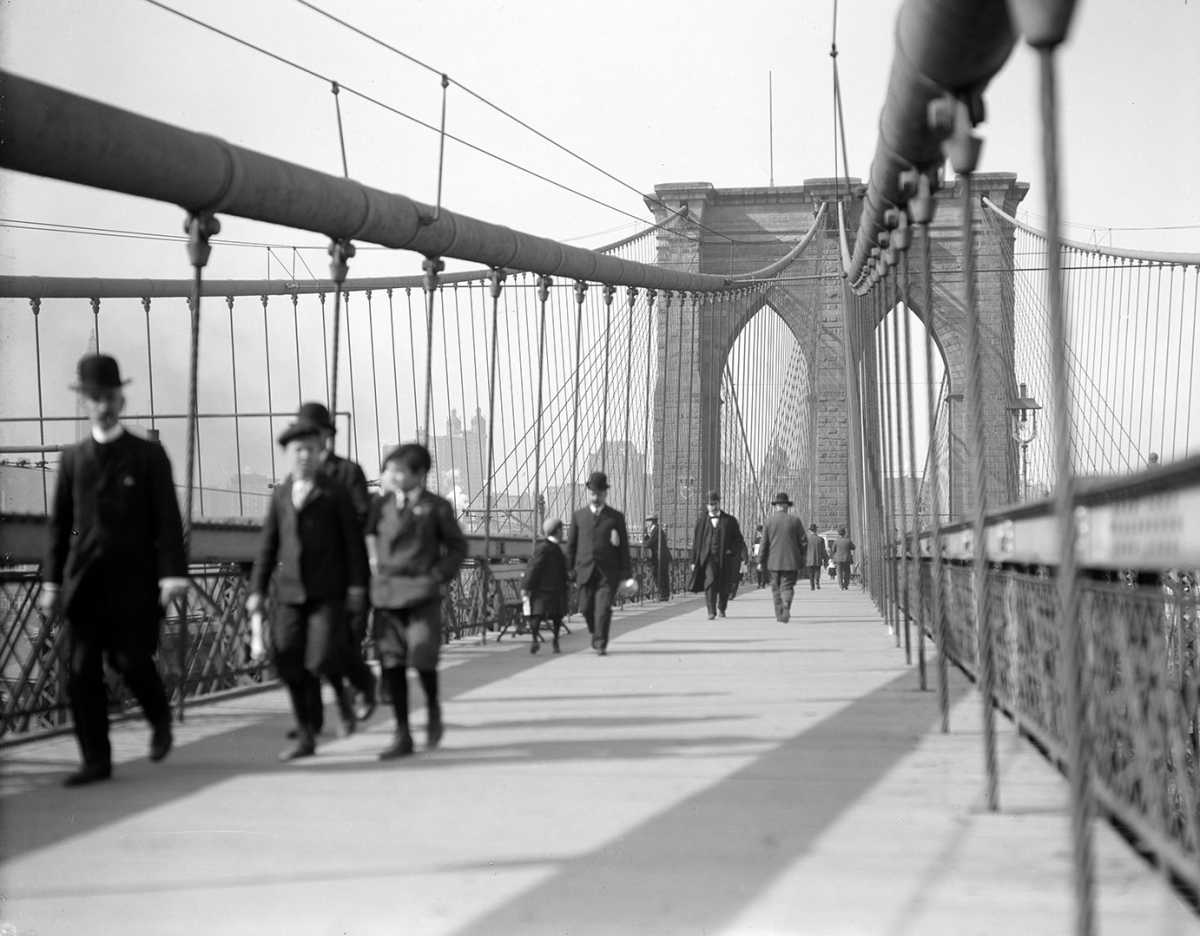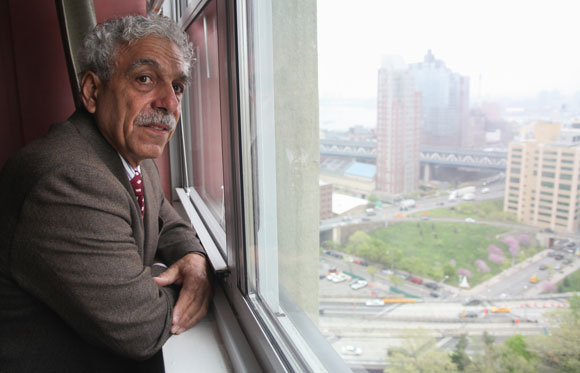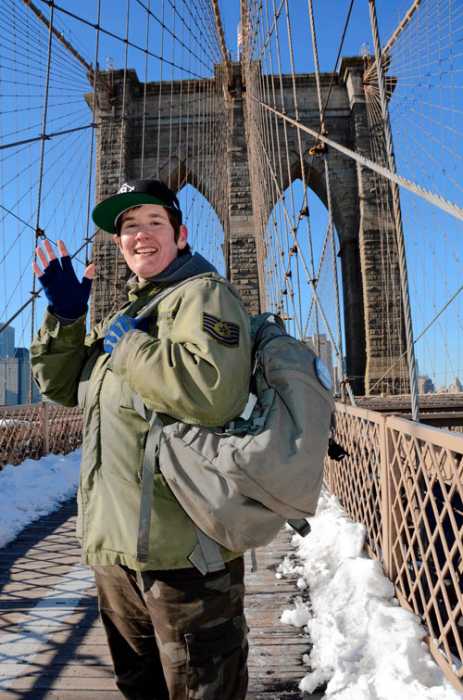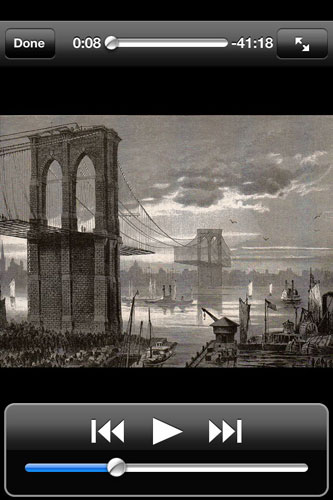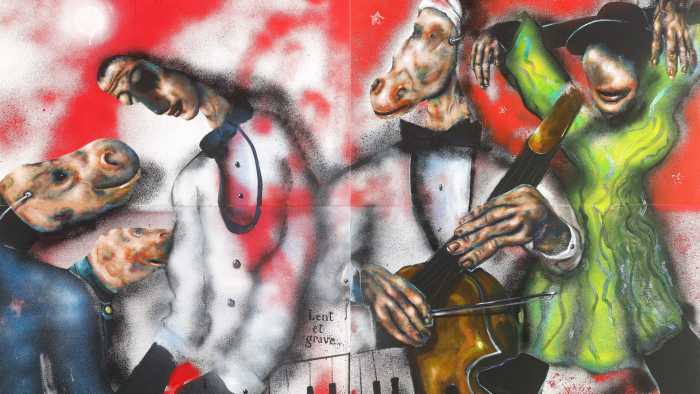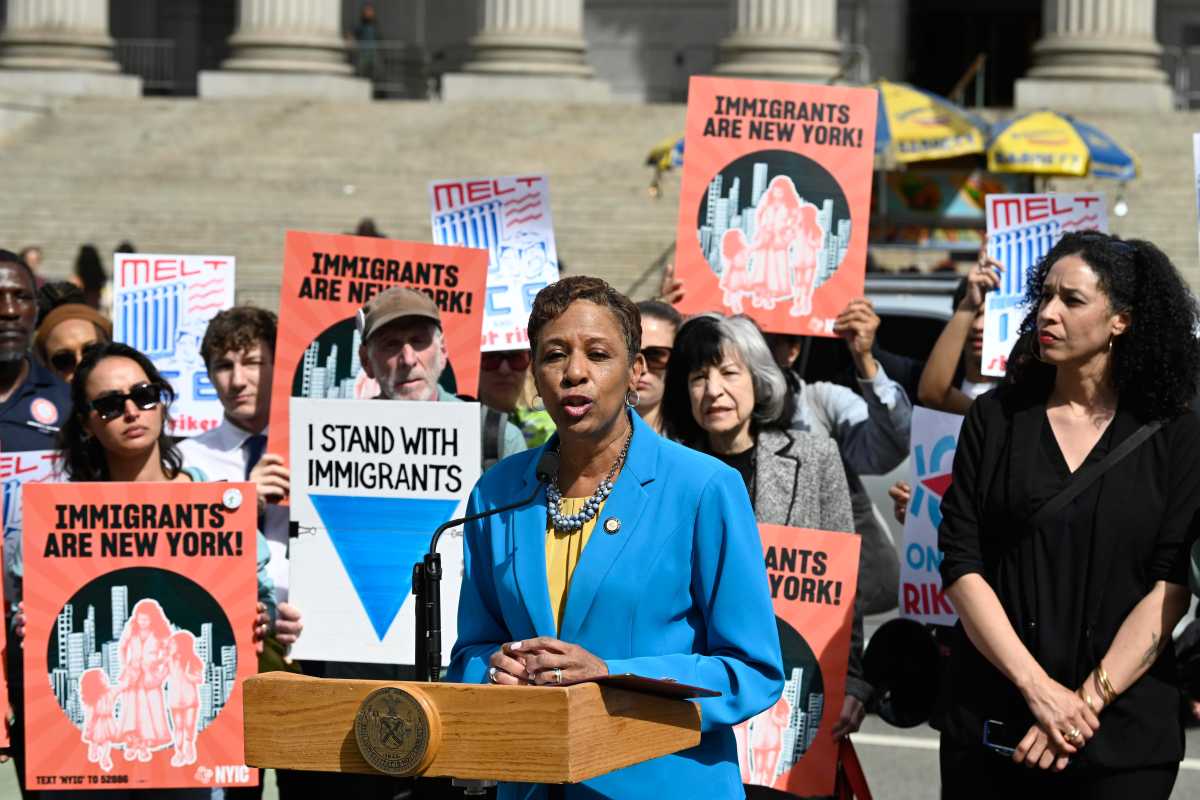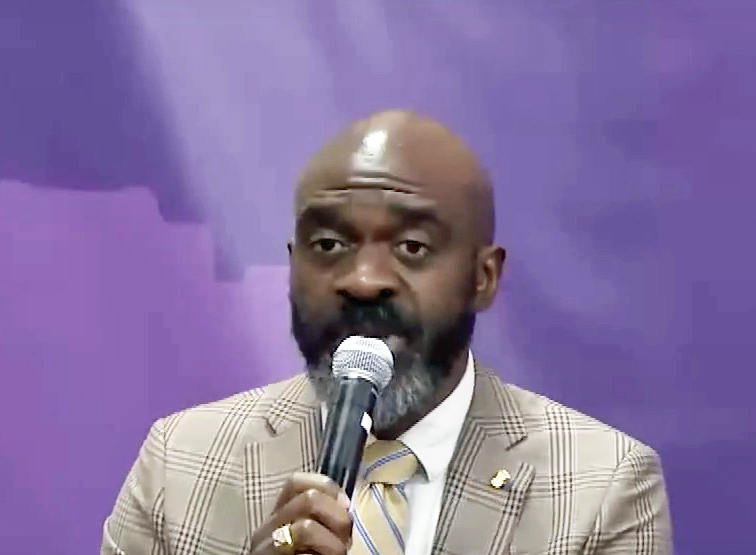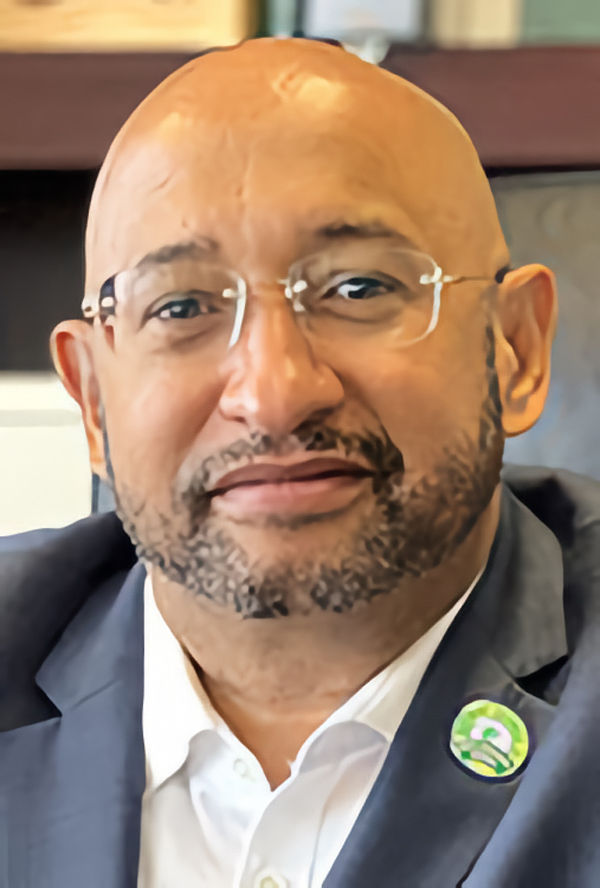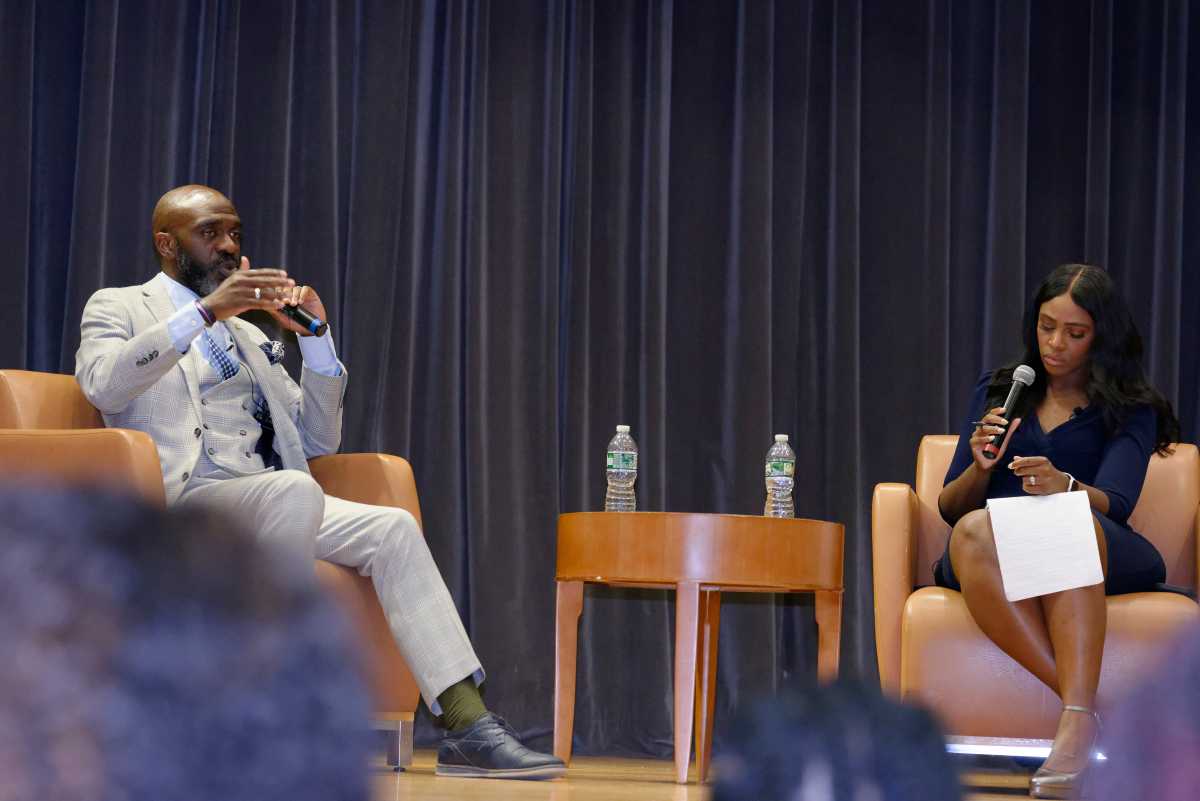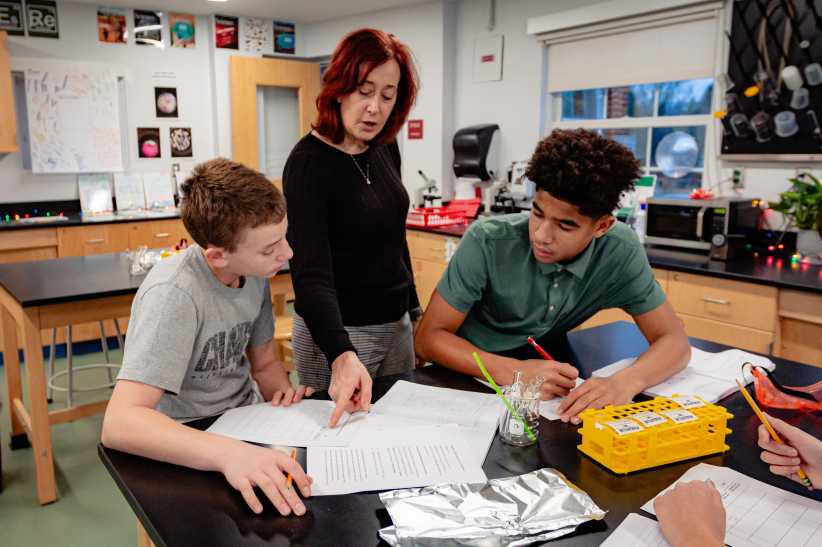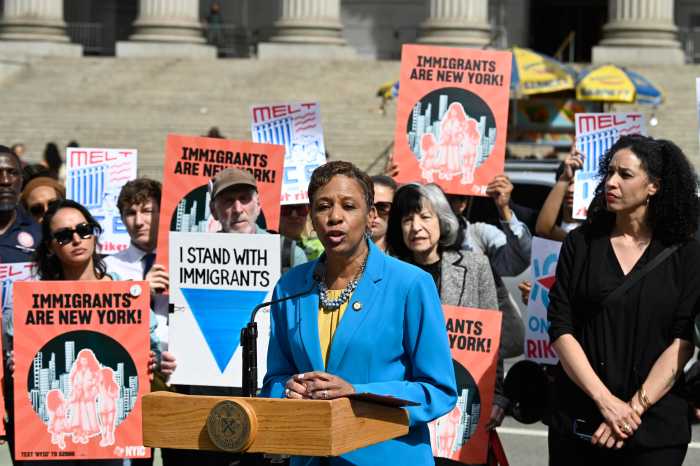Kings County history buffs can now learn about the iconic Brooklyn Bridge through a series of photographs, which tell the story of the span’s construction through a set of never-before-seen images that evoke the city’s engineering history.
Author Jeffrey Richman will join the Center for Brooklyn History to share images from his vast collection, many published for the first time in his new book, “Building the Brooklyn Bridge: 1869-1883.”
The free-to-join virtual event takes place at 6:30 pm on Wednesday, Sept. 1.
First opened to the public in May of 1883, the cobblestone bridge was the world’s longest suspension bridge at the time of completion, and was hailed as a manufacturing marvel throughout the nation.
Designed by John Roebling, the bridge was near completion when the architect died from a tetanus infection, leaving his widow Emily, and his son Washington Roebling to complete the bridge in his name.
During the bridge’s development, at least 20 people died from various construction-related injuries, although many historians argue that the number of fatalities is actually much higher.
In addition to the engineering feat that lead to the creation of the span, the political maneuvering was nearly as dramatic — as the notoriously patronage-laden Tammany Hall political club, lead by the infamously corrupt Boss Tweed, was largely in control of the city’s political process at the time.
Tweed allegedly helped push through $65,000 worth of bribes to the political elite in the Five Boroughs, which facilitated a $1.5 million bond issue to begin construction. History.com reported that Tweed and his friends may have stolen as much as $200 million during the construction period of the span.
Today, some 125,000 motor vehicles drive across the bridge each day, as do 30,000 pedestrians and 3,000 bicyclists.
The bridge saw its most major renovation in years recently, when Mayor Bill de Blasio announced that one car lane on the Manhattan-bound side would be transformed into a bike lane — a project that is nearing completion this month.
Now, interested Brooklynites can take a walk through history with Richman’s extraordinary photographs, showing yesteryears’ construction miracles that conjure the irresistible reverence for New York’s past.
How the Brooklyn Bridge Was Built: A Visual History [Sept. 1 at 6:30 pm. The Brooklyn Public Library. Virtual] Free. Register here.
A version of this story first appeared on Brownstoner.


